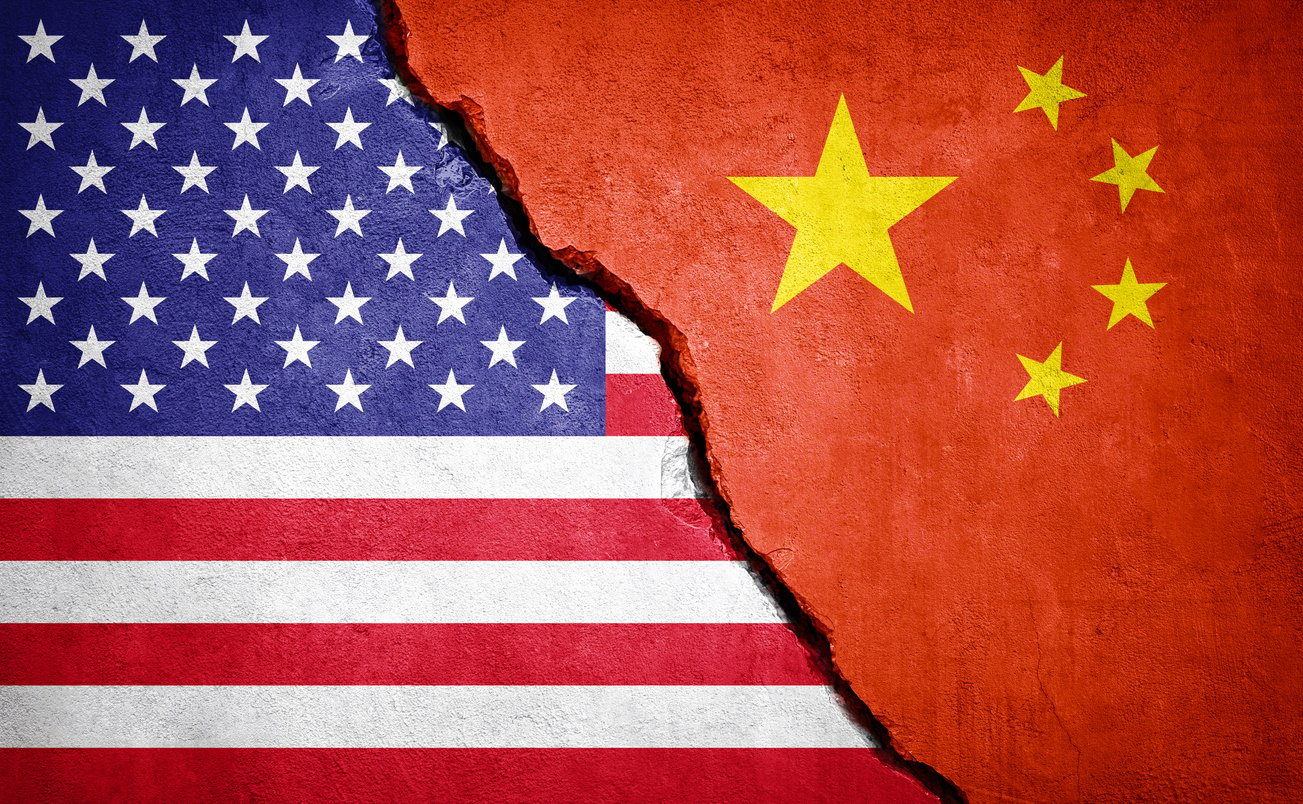Tensions between the U.S. and China have reignited, reversing the optimism that emerged only weeks earlier. What was once described as a “complete reset” in trade relations has quickly unraveled, giving way to renewed friction. Tariffs are making a comeback, tech restrictions are tightening, and diplomatic gestures are falling flat. In this shifting landscape, investors are being forced to adjust their expectations amid rising policy uncertainty. This article examines the latest turns in the U.S.-China trade conflict and assesses their impact on equity markets.
The Breakdown of Optimism
Following a temporary détente in May, the Trump administration has reasserted a hardline stance toward China. Treasury Secretary Scott Bessent recently confirmed that trade talks are "a bit stalled," with no confirmed call between Trump and Xi Jinping—a prerequisite for any meaningful progress.
In parallel, Washington has tightened curbs on chip design software and revoked Chinese student visas, while also advancing weapons sales to Taiwan. These actions are matched by China's countermeasures: a sweeping anti-espionage campaign targeting foreigners, export controls on rare earth elements, and ongoing diplomatic pressure. The bilateral climate is growing more strained.
Economic Repercussions Mount
Despite these tensions, U.S. equity markets closed May on a strong note. The Nasdaq rose nearly 10%, the S&P 500 over 6%, and the Dow around 4%, buoyed by easing inflation and tech sector momentum. However, history has shown that geopolitical risks can eventually bleed into fundamentals.
In the previous trade war, tariffs disrupted global supply chains, drove up costs, and squeezed corporate profits. China's manufacturing PMI dropped sharply, while inflation in the U.S. surged. Now, similar pressures are reemerging: Trump has accused China of breaching the Geneva agreement, and American companies once again face heightened uncertainty around compliance, taxation, and the input costs.
Capital Market Weaponization
Adding another layer of risk, the U.S. has proposed a tax measure targeting entities from countries with "discriminatory" tax policies. Analysts warn this may deter foreign investment, weaken the dollar, and reduce appetite for U.S. assets. Deutsche Bank labeled the proposal a "weaponization of capital markets," signaling a broader shift from open markets to strategic leverage.
Meanwhile, legal uncertainty continues to surround the implementation of tariffs. A federal appeals court recently reinstated Trump-era tariffs after a lower court had temporarily blocked them, pending further review. The administration is also exploring alternative legal pathways, fueling continued volatility in investor sentiment. This policy volatility is directly influencing market sentiment and affecting discount rates—particularly in globally exposed industries such as semiconductors, luxury goods, and automotive manufacturing.
Equity Market Scenarios
Given the fragile détente, we see three plausible scenarios ahead:
Escalation: Broader sanctions and additional tariffs could lead to sharp pullbacks in the technology and industrial sectors, particularly among companies with significant exposure to China. Earnings forecasts may face downward revisions extending into 2025.
Stalemate: Talks remain frozen, creating a choppy, range-bound market. Defensive sectors like healthcare and consumer staples would outperform amid persistent uncertainty.
Re-engagement: A breakthrough via Trump-Xi dialogue could reignite risk appetite and lift cyclicals and small-cap stocks. However, this scenario remains unlikely in the near future.
Amid these uncertainties, we recommend a Barbell Strategy: Maintain an overweight position in U.S.- focused growth sectors such as AI, Fintech, and Cloud Computing, while balancing exposure with defensive assets like REITs and dividend aristocrats. The recent surge in Bitcoin—alongside record inflows into BlackRock’s iShares Bitcoin Trust—signals a growing investor shift toward alternative stores of value, underscoring broader market unease.
Conclusion: Position for Volatility
The renewed trade tensions go beyond economic issues; they signify a fundamental decoupling between the world’s two largest economies. Although U.S. equity markets may keep climbing in the short term, underlying risks are steadily increasing. Ongoing tariff disputes, political brinkmanship, and disruptions to capital flows all contribute to latent market volatility.
A global diversification strategy, reduced exposure to policy-sensitive sectors, and maintaining flexibility are essential for long-term investors. In today’s environment, geopolitics is not just background noise—it is the defining signal shaping market trends and revealing underlying risk.
EXPLORE MORE POSTS
Market Shaken by Renewed U.S. - China Tensions & Credit Fears
Renewed U.S.-China trade tensions and banking concerns triggered a sharp global...
Read Moreby Jerry Yuan
Why a Traditional Financial Advisor May Be Failing You ?
For decades, the traditional financial advisor has symbolized trust, expertise,...
Read Moreby Irman Singh
Fed Minutes Show Split Outlook: Rate Cuts Expected, but Inflation Maintains Caution
Divided Fed, uncertain path ahead — rate cuts are coming, but sticky inflation...
Read Moreby Jerry Yuan
From Insight to Execution: The Algo Way
Algorithmic investing, once the domain of hedge funds and prop desks, has...
Read Moreby Irman Singh
Drug Prices Drop, Pharma Faces a New Game
by Jerry Yuan
AI and Investing : Smarter Decisions, Sharper Insights
Artificial Intelligence (AI) is transforming the way investment decisions are...
Read Moreby Irman Singh
U.S. Tariffs Reshape Markets : Inflation, Supply Chains, and Equity Risks
by Jerry Yuan
The Overlooked Basics of Family Office
Family offices are created to simplify wealth management, protect assets, and...
Read Moreby Irman Singh
First Fed Cut in a Year: Growth Hopes, Softer Backdrop
The Fed’s first rate cut since 2024 signals a cautious pivot as growth stays...
Read Moreby Jerry Yuan
Smart Diversification for Today’s Economy
For high net worth (HNW) investors, diversification is not just about owning a...
Read Moreby Irman Singh
Markets Gain as Job Market Strains Push Fed Toward Rate Cuts
Weak jobs data has shifted the Fed’s focus from inflation to employment, making...
Read Moreby Jerry Yuan
Why Retirement Accounts Remain the Biggest Opportunity
Investors in the United States often overlook retirement accounts in favor of...
Read Moreby Irman Singh
U.S. Jobs Report: From Resilience to Contraction
The August jobs report signaled a sharp labor market slowdown, with just 22,000...
Read Moreby Jerry Yuan
Decoding FIRE: How Americans Are Redefining Retirement
The FIRE movement—Financial Independence, Retire Early is a personal finance...
Read Moreby Irman Singh
U.S. GDP Rebound Fuels Market Highs
The U.S. economy surprised with strong Q2 growth, easing recession fears and...
Read Moreby Jerry Yuan
The Big Three Risks Investors Must Plan for in Retirement
Retirement success for U.S. HNWIs isn’t just about wealth—it’s about...
Read Moreby Irman Singh
Powell Signals September Rate Cut, Markets Hit Record Highs
by Jerry Yuan
I’m Too Young to Think About Retirement – Or Am I?
If you’re in your 20s or 30s, retirement may feel like a distant...
Read More




















